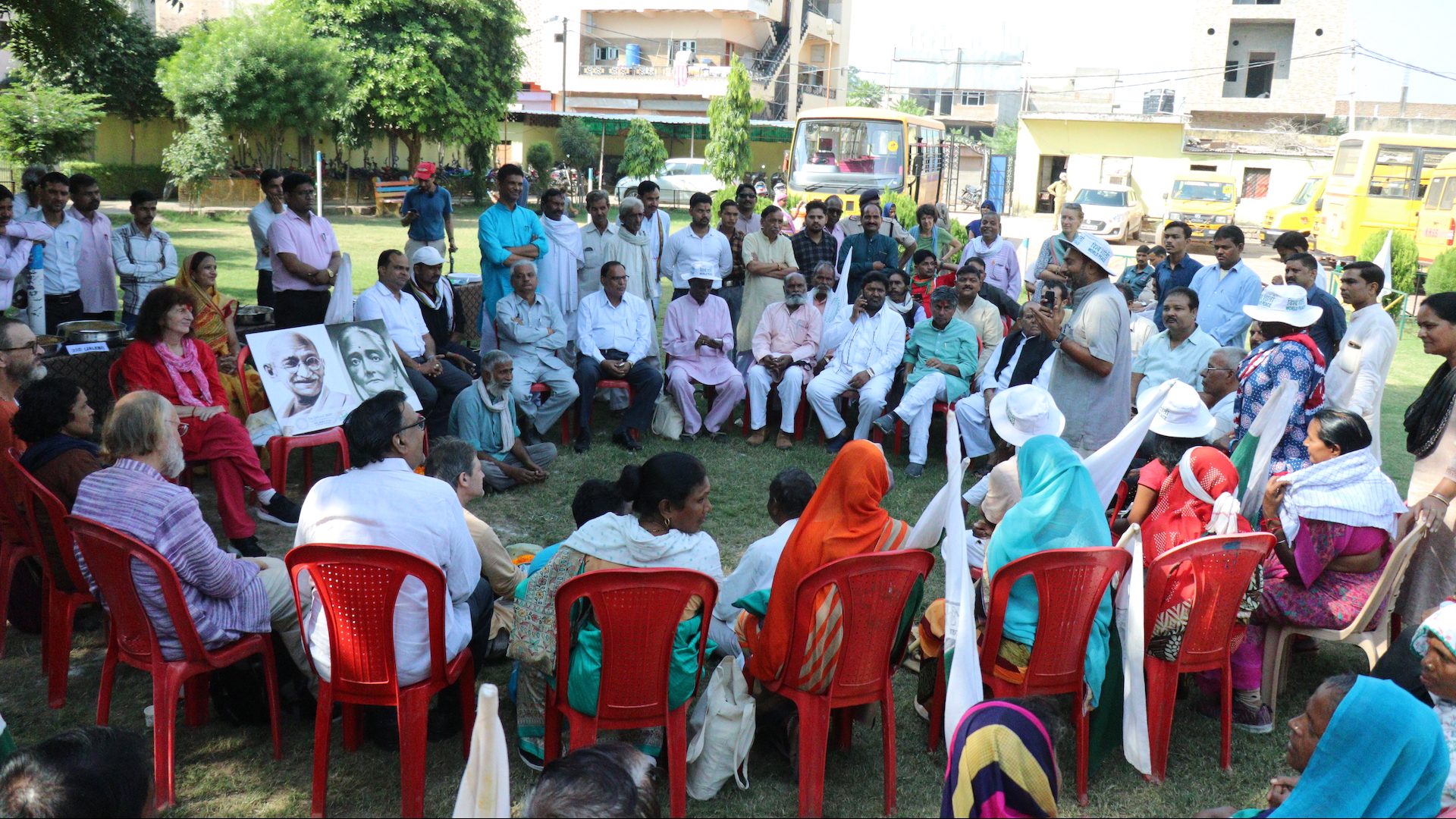The means may be likened to a seed, the end to a tree, and there is just the same divine connection between the means and the end as there is between the seed and the tree.
– Mahatma Gandhi
Nonviolent advocacy is distinct from mainstream advocacy due to the fact that it is not simply lobbying for an interest group; rather it is promoting a nonviolent course of action or strategy. What is the overall aim of the advocacy? Basically to reform institutions, policies at the international level.
The main spheres of advocacy within Jai Jagat are: (i) local, (ii) global advocacy or (iii) local connected to global. For example (i) a local advocacy may be any action that is trying to change the existing conditions sub-nationally. In contrast, (ii) global advocacy is generally concerned with a policy or process within the regional or international bodies (the transnational level); and (iii) the local to global connect relates to an issue locally that is related to a policy globally.
Case Studies:
These are the fourteen areas that are being taken up by different groups in the network. These are:
- Land Rights
- Housing Rights (Urban)
- Water Ethics
- Community practices for commons
- Human Rights Defenders
- Food Security/Food Sovereignty/
- Agro Ecology
- Corporate accountability and Collaborative Development
- Climate Justice
- Women’s grassroots Engagement
- Nature’s Rights
- Rights of Refugees
- Nonviolent Economy
- Peace Education/Reducing Conflict
Following are the direct, indirect or solidarity actions carried out to advocate the message of Jai Jagat:
One of the two sources information that feeds into the map of the Jai Jagat is from the case studies/approach papers. You will find below that the Proposed Template and General Guidelines assists in identifying how to write up a nonviolent action.
Objectives of Case Studies/Approach Papers
- To develop approaches using a holistic nonviolent perspective and interventions.
- To derive from these papers common tools, strategies, principles of nonviolence.
- To organise these approach papers around justice, equality, dignity and rights of the marginalized people.
- To synthesise these cases with the aim as the basis of the dialogue with people, society and the institutions.
Proposed Template
- The papers must be of alternative solutions that have led (are leading) to positive change for people who need it the most; initiatives that have risen from the bottom are encouraged.
- Presented from the lens of nonviolence, this case study must offer a clear understanding of : What it is about, what happened, who did what, when, how, what was the impact of the actions and any learnings that can drawn from it.
- We encourage the author to write the case in the way that it seems most appropriate to the author, people and region it is associated with.
- Initiatives could range from a campaign to local innovation, and could be cases that have already been documented.
- We recommend considering the linkages between the local action and global impact local to global (eg a national or international policy or power structure that has helped or impeded change or been influenced).
General Guidelines
1.1 Executive summary of the study (750 words)
1.2 Geographical coordinates with brief analysis on the theme, the particular region and the prevailing problems (500 words)
1.3 Strategic nonviolent interventions(processes) by the initiative, organisation, community or group of people to address the problems as solutions. Giving the different nonviolent processes and tools employed and their impact (1500 words)
1.4 Challenges
Key challenges encountered during and post the intervention. The corrective processes used to address these, its impact and present status. (1000 words)
1.5 Brief analysis on the engagement and different kinds of responses received from the respective community, state, corporations, policy makers, and global/national institutions. (1000 words)
1.6 Community Ownership
Degree of future scope and sustenance of these practices in being carried forward independently (750 words)
1.7 Learnings and scope
Key learnings and scope for application of these practices from local and global perspectives(750 words)

